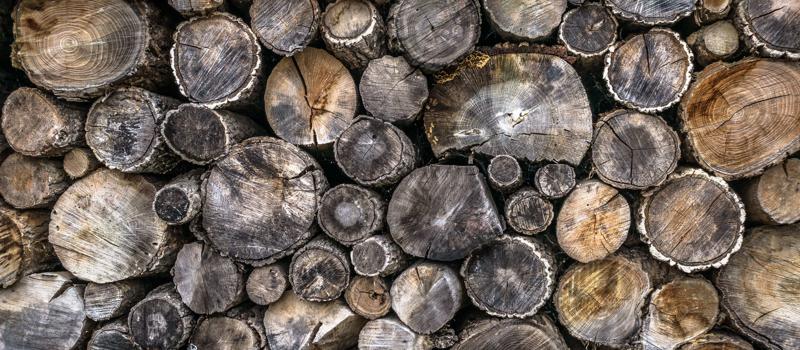Four Insects That Nest in Firewood
Posted by Mosquito Squad
October 31, 2022

It’s officially cozy season in the United States. Many of us will throw a few logs on the fire as we unwind from a long day, welcome friends and family into our home, or venture outdoors to enjoy the crisp air and a toasted marshmallow (or two). While we’re seeking to warm up our homes, a handful of pests could be making a home out of our selected firewood.
If you’re purchasing commercially sold firewood, you likely don’t need to worry. Firewood typically undergoes a drying and seasoning process before being sold, making the presence of pests less common.
However, if you’re chopping your firewood or purchasing it from local mills or farms, you want to be aware of these pests that could be found within the wood.
Ticks
Undisturbed or rarely used woodpiles can create habitats for rodent pests. For rodents like mice and rats, the gaps between pieces of stacked wood can make for cozy nesting spaces. For ticks, the rodents make for a tasty meal ticket. Tick nymphs feed on small rodents, and allowing mice to shelter in your woodpile allows ticks to survive from nymph to adulthood, building up the tick population in your yard. Storing woodpiles away from the home and monitoring for rodent activity can decrease the risk of bringing ticks inside your home during cooler months.
Mosquito Squad offers tick treatments that can assist in cutting down on tick presence in rodent-occupied areas.
Wood-boring Beetles
As their name suggests, these beetles bore through and live in pieces of live and dead wood. Typically, beetle eggs and larvae live within the wood, chewing their way through and creating tunnel-like grooves. Upon maturing into adulthood, wood-boring beetles emerge from the wood and leave behind holes. There are many types of wood-boring beetles, but the most destructive are powderpost beetles.
Powderpost beetles earn their name due to the fact that they reduce solid, dry woods down to sawdust-like powder. Severe infestations can damage firewood piles, wood furniture, and, in extreme cases, home infrastructure (window panes, floorboards, cabinets, etc.). These beetles primarily attack hardwoods, but any porous wood provides an opening in which powderpost beetles can lay their eggs.
Termites
Termites are notorious wood-loving insects, and where there’s one, there are bound to be more. As social insects, termites live in colonies together. Termites are small but usually easy to spot against the wood. Many termite colonies are workers and soldiers whose bodies are almost entirely white.
To avoid termite damage to the home, store woodpiles away from the house, and make sure wood that is brought inside is used immediately. If you prefer keeping a smaller woodpile inside next to a fireplace, store it away from cracks and crevices in the nearby walls, door frames, or windowsills. Termites excel at traveling through these gaps, and termite infestations typically are not noticed until significant damage has already been done.
Carpenter Ants
Carpenter ants tend to infest damp, moist, and dilapidated wood. Rather than eating the wood for nutrients as some beetles and termites do, carpenter ants take advantage of the softness of the damp wood and tunnel holes in the wood to lay eggs and build nests. Carpenter ants likely won’t establish in the home as they require sustenance outside of wood to thrive and reproduce. However, be mindful when choosing pieces of wood to bring in from outdoors that carpenter ants may be lurking inside.
In addition to the above, spiders, isopods, roaches, and other miscellaneous arthropods may take refuge in wood piles or wood bundles from the store that are left undisturbed. As temperatures cool, insects and arthropods must seek shelter to survive unaccommodating conditions (their alternatives are to overwinter or die). Woodpiles that sit out for most of the season and go untouched make great hotels for many insects and spiders.
When collecting your own firewood or bringing in wood from the outdoors:
- Check for any insects crawling around on the wood or falling out of the wood as you pick it up.
- Check for outward signs of insect damage (small holes all over, grooves, fine powdery dust).
- Use firewood immediately after it is brought inside.
- Keep a tidy fireplace and woodpile.
- Sweep up wood debris after making a fire, and clean out the fireplace regularly for unburned pieces.
- Don’t overstock wood or pile more than you will use; the longer the pile goes untouched and undisturbed, the higher the star ratings for the bug hotel.
Contact your local Mosquito Squad today to inquire about specialty treatment services!
